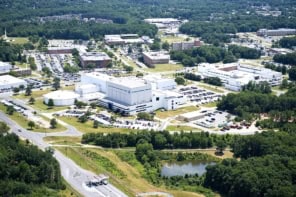A trio of books about doomsday and disaster

Apocalypse eventually
The list of disasters that threaten life on Earth is long and varied. The list of books that have been written about such disasters, however, is even longer. With what is, in retrospect, spectacularly bad timing, we picked this month to review a trio of recent books that explores the science of disasters. Of the three, Armageddon Science: the Science of Mass Destruction is the most conventional. In it, the science writer Brian Clegg presents a tour of the science and history behind numerous possible doomsday scenarios, ranging from the unlikely (antimatter bombs and planet-eating black holes) to the all too real (climate change). Not all of them are covered in the same depth. For example, tsunamis, earthquakes, asteroid impacts, supervolcano eruptions, alien invasions and irradiation by interstellar gamma-ray bursts are all crammed into a mere 26 pages. In contrast, the chapter on nuclear weapons takes up almost a quarter of the book, and sections on nanotechnology and climate change are also relatively meaty. One reason for this emphasis may be the author’s own background: Clegg is a physicist by training, and he seems more at home with physics-related disasters than he does with geological ones. However, as the book’s thoughtful introduction and conclusion make clear, Clegg is also primarily interested in disasters that are in some sense caused by science, not merely explained by it. Noting that Marie Curie died of radiation-induced leukaemia, he observes that “scientists don’t always have a great track record in keeping themselves and others safe”. Apparently callous attitudes such as these – which Clegg links, tenuously, to the fact that many scientists exhibit mild symptoms of autism – have a detrimental effect on the way outsiders perceive the scientific community.
• 2010 St Martins Press £18.99/$25.99hb 304pp
A scientific conspiracy?
Large-scale US government support of scientific research was born in the Second World War. To keep federal dollars flowing in peacetime, scientists have repeatedly spread alarms about natural disasters such as asteroid impacts and climate change – the solutions to which, inevitably, involve more government-funded research. This, at least, is the argument put forward by James Bennett in The Doomsday Lobby: Hype and Panic from Sputniks, Martians, and Marauding Meteors. As this synopsis indicates, Bennett, a political scientist at George Mason University in Virginia, is actively hostile to government support of scientific research – or, as he terms it, “the federal appropriation dole”. However, readers who are thick-skinned enough to withstand repeated insults will find a few atoms of truth inside Bennett’s layers of anti-government ideology. As he points out, state-funded science is not always a benign matter: it has also meant despoiling large swathes of the American West with dams, subsidized mining and weapons testing. Moreover, it is true that in former times, science functioned tolerably well without state support. As Bennett describes in the book’s opening chapters, the rise of US astronomy in the early 20th century was funded almost entirely by philanthropists. Yet his privately funded scientific utopia has a fundamental flaw. One of the anecdotes he uses to describe it concerns a 19th-century “Society for the Diffusion of Useful Knowledge”, which built itself an observatory after selling more than 300 memberships at $25 each. That may sound commendably egalitarian, but it is worth noting (as Bennett does not) that when the observatory opened in 1845, $25 was worth as much to the average person as $12,300 is today, as measured by per capita GDP. The fact is that before the late 19th century, scientists were, overwhelmingly, either aristocrats or people who could persuade aristocrats to back them financially. Is that really a better system?
• 2010 Springer £22.99/$24.95pb 200pp
Things fall apart
What do the Tay Bridge disaster, a tense family game of Monopoly and the loss of vegetation in the Sahara have in common? According to Bristol University physicist Len Fisher, who uses each of them as examples in his book Crashes, Crises and Calamities, they all have something to tell us about “critical transitions”, which occur when a system “abruptly, without apparent warning…jump[s] to a very different state”. Sometimes, such transitions are obvious, as in the 1879 collapse of the rail bridge across Scotland’s Tay estuary, or a player overturning a Monopoly board in frustration. Others, such as desertification, are more subtle, and are preceded by characteristic signs that can – if properly interpreted – alert observers to impending change. The key point, Fisher writes, is that “to anticipate and deal with such disasters, we need to be able to predict the changeover point”. His book outlines three overlapping approaches for doing this. One of them, catastrophe theory, classifies transition-prone systems into distinct mathematical types – including one, the “cusp catastrophe”, that has variously been used to explain love–hate relationships and the behaviour of cornered dogs. The second approach, computer modelling, is useful for predicting the outcome of complex situations, while the third focuses on early-warning signs such as fluctuations in the population of an animal species. It is all fascinating stuff, even if the threads that bind Fisher’s examples together sometimes seem weak.
• 2011 Basic Books £13.99/$23.95hb 256pp



